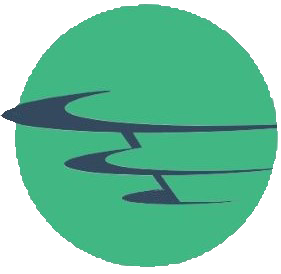 Estuaries and coastal areas of the world are the prime habitats of humanity. About 80% of the world’s population lives in coastal areas, and nitrogen (N) discharges from poor or untreated wastewater systems are increasing1. Nutrient management and water quality restoration goals are being addressed by the expansion of capital, resource, and energy-intensive sewer and septic systems.
Estuaries and coastal areas of the world are the prime habitats of humanity. About 80% of the world’s population lives in coastal areas, and nitrogen (N) discharges from poor or untreated wastewater systems are increasing1. Nutrient management and water quality restoration goals are being addressed by the expansion of capital, resource, and energy-intensive sewer and septic systems. Falmouth, Massachusetts, USA has 15 estuaries. Like many estuarine-rich coastal areas, Falmouth is a tourism hot spot and its population triples in summer. Falmouth is faced with serious water pollution problems due to excessive nutrients from sewage effluents and leaky residential septic systems leading to an increased number and severity of harmful algal blooms in coastal estuaries and ponds. To remedy this pollution, the state has mandated towns meet N reduction goals, setting a Total Maximum Daily Load (TMDL) for each impaired estuary. To achieve this by conventional means, citizens are faced with an expensive dilemma - pay millions of dollars for sewers (~$100,000/house to install and hook-up) that scientists are uncertain can solve the problem and will take decades to install - or implement state-mandated innovative alternative septic systems (IAs), with the same slow installation rate and uncertainty of effectiveness which could cost property owners ~$35,000-$100,000 each, plus costs of landscape repair, increased energy use, and annual maintenance fees.
A group of citizen scientists led by The Green Center2 embarked on an alternative, integrated nutrient-removal plan to meet the mandated N reduction goals. Their plan combined:
**Downstream Nutrient Bioremediation with Restorative Shellfish Aquaculture
Falmouth has developed municipal restorative shellfish aquaculture, zoning estuaries for commercial shellfish growers and recreational harvesting, and providing TMDL nitrogen credits for harvested oysters. Falmouth contracts shellfish farmers to grow oysters in public waters. Growers pay a $20,000 access fee for 0.2 ha of coastal estuary and agree to grow a minimum number of market-sized oysters. In 2023, shellfish farmers harvested 1.43 million oysters from 0.6 ha. It was estimated that a total of ~400 kg N (0.27 g N/harvested oyster3) was removed from 0.6 ha of oysters. In addition, for an annual fee, residents can harvest a limit of one-quarter bushel of oysters/week (~100 oysters, ~20-27 kg total). Harvests produced an estimated gross revenue of ~$650,000 in 2023. The ~400 kg N removed by harvested oysters avoided spending an estimated ~$7 million on new sewer systems or IAs to remove the same amount of N. Restorative aquaculture was so successful that the shellfish lease area is expected to increase tenfold in 2025.
Restorative shellfish aquaculture in floating cages reduces N in coastal waters and recycles nutrients from coastal waters back to land as food.
**Upstream Nutrient Reduction with Urine Diversion (UD)
UD is the practice of capturing urine at the source with water-saving or waterless UD fixtures and urinals, collecting it and recycling nutrients as agricultural fertilizer4,5. ~80% of the N in wastewater is from urine but urine is only ~1% of the volume of wastewater. Pilot studies of residential UD showed that ~4.4 kg N/year per household of 1.5 people could easily be diverted and kept from entering residential wastewater6. In a watershed with 4,500 homes and a TMDL set at 12,000 kg N/year, UD from ~2,700 homes could achieve the required TMDL and avoid spending ~$270 million on sewer systems or IAs6. UD is a simple, low tech, affordable, water, nutrient and energy-saving technology that reduces nutrient loading and restores water quality, albeit needing certification by states, education, and conceptual behavior changes7.
Infrastructure for UD diverts N from entering coastal waters and recycles nutrients
to agriculture
Restorative shellfish aquaculture removes nutrients in situ already present while UD prevents new nutrients from entering groundwater and estuaries. Citing actual data from restorative shellfish aquaculture and UD, citizen scientists calculated that some N impaired estuaries from septic leachates would not require expensive sewer or IA systems at all. Although UD alone could meet the nutrient reduction goals, restorative shellfish aquaculture immediately improves water quality and would reduce the investment required (150 fewer homes with UD per ha of oysters). Quick-to-implement restorative shellfish aquaculture and UD would improve the aquatic ecosystems sooner than the decades-to-implement sewers and IAs.
These alternative, integrated ecological approaches to estuarine restoration create new community revenues, new jobs, produce nutritious, tasty foods, and recover valuable agricultural fertilizers. They use fewer natural resources, are more environmentally beneficial and sustainable than conventional solutions, and would avoid future, large greenhouse gas emissions.
REFERENCES
1. G. Van Drecht et al., Glob Biogeochem Cycles 23, GB0A03 (2009)
2. The Green Center, https://newalchemists.net
3. J. Reitsma et al, Nitrogen extraction potential of wild and cultured bivalves harvested
from nearshore waters of Cape Cod, USA Marine Pollution Bulletin 116 (2017) 175–181
4. The Rich Earth Institute, https://richearthinstitute.org/
5. Massachusetts Alternative Septic System Test Center, https://www.masstc.org/
6. The Green Center, Two-Month Urine Diversion Project Final Report MASSTC County of Barnstable MA. https://newalchemists.files.wordpress.com/2024/03/green-center-ud-project-final-report-2024-03-13.pdf
7. C. Wald, Nature 6502, 202 (2022)


